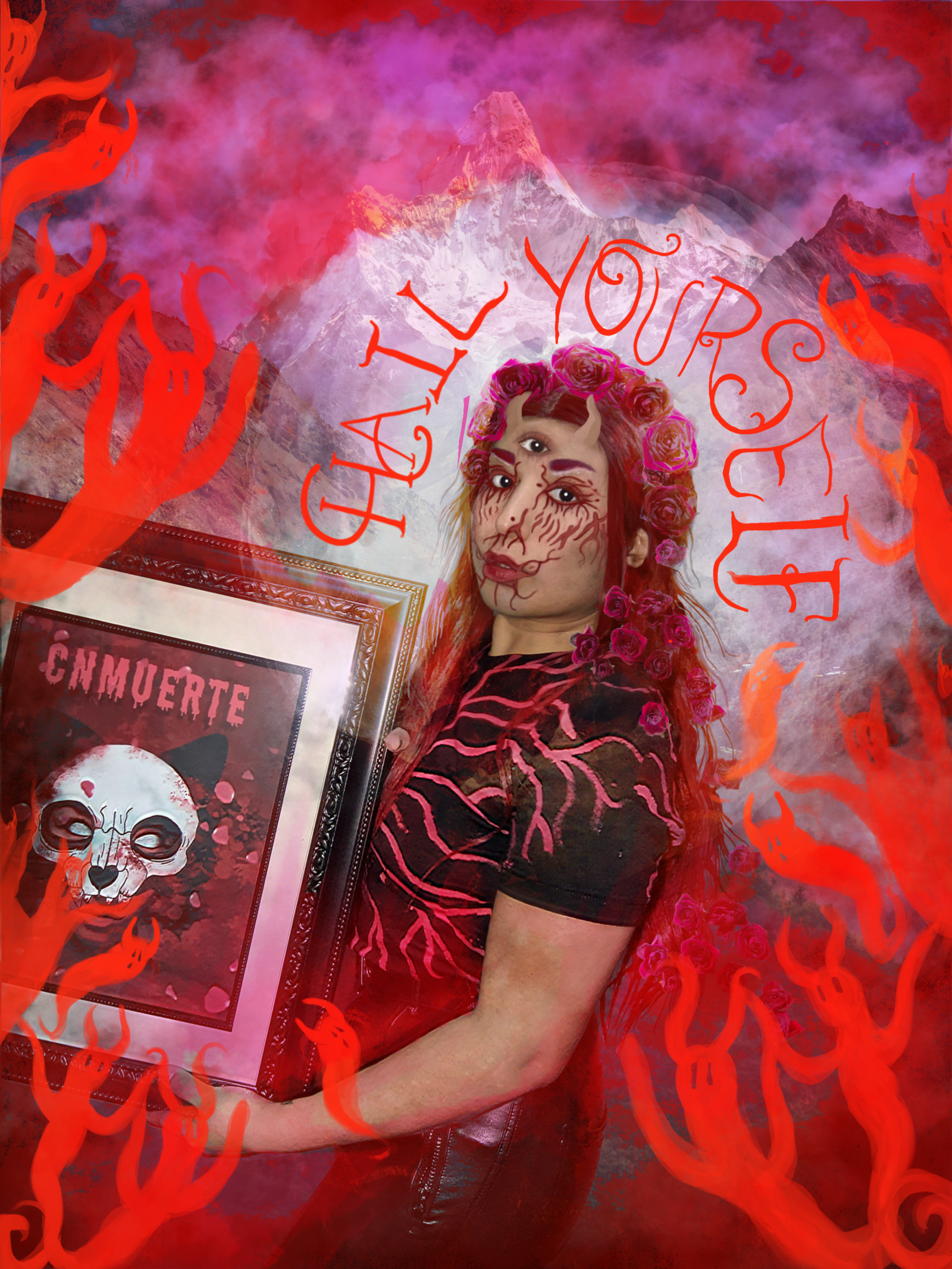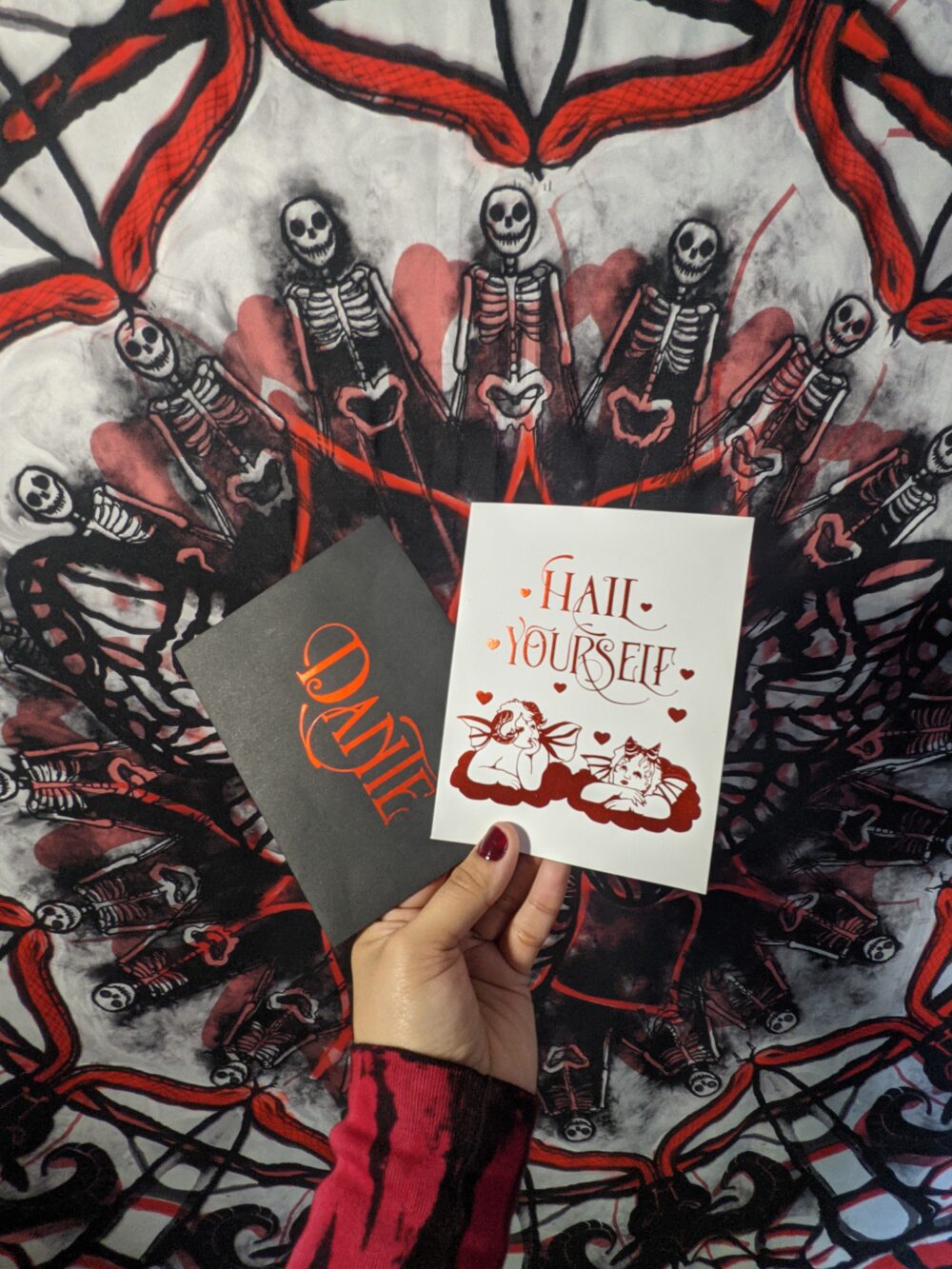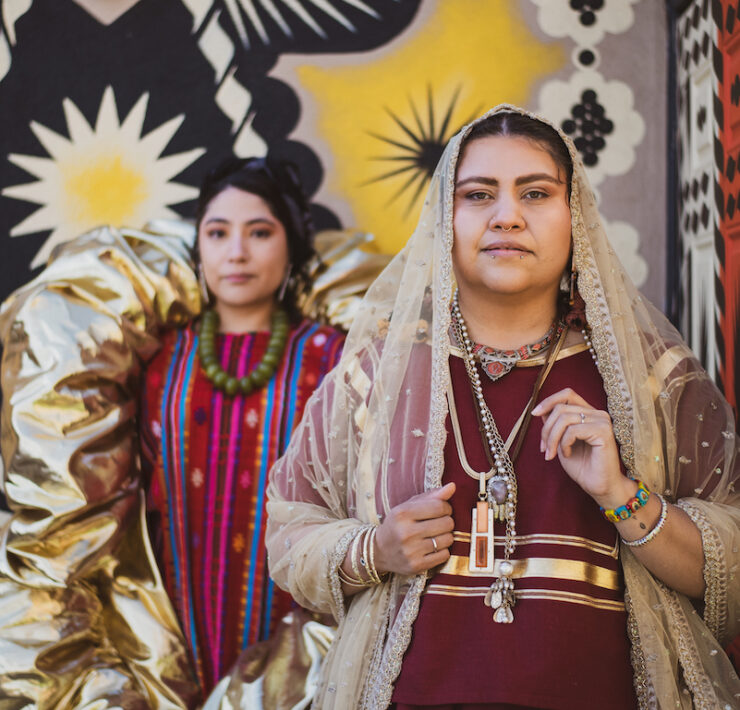Unmasking: Clara Muerte No Longer Hides in the Shadows

Keegan (they/them) is a journalist/artist based in Los Angeles.
Hop onto Clara Muerte’s art site, and you’ll enter a world of sinister, goth-inspired bliss, some offerings flirting with a more quaint and cutesy style, and everything blossoming from the artist’s multi-faceted identity, background, and queerness.
A fresh Coloradan based in Pueblo, Muerte has used art as a way to cope with trauma since they were young, and they note, “It’s always been really goth and creepy ever since I was little, too.”
They’ve fully embraced that style, though as they immersed themself in new experiences, like doing yoga and meditation. Muerte began applying some of their signature style to other items, like tapestries or mandala-style art. It’s also important as an artist to embrace the their multifaceted expression, nodding to their “cute queer side.”
“I have two personalities: I have one that’s super serious and one that’s goofy,” they say. “Eventually, I started to grow and realized that I love to do different art styles and just kind of went from there.”
And a lot of Muerte’s own experience informs their art, as a nonbinary person of color born to immigrant parents and previously diagnosed with ADHD, dyslexia, and dyscalculia; they are now reaching a point in their life where they are confronting their autism and navigating recovery. They look back to their childhood and recognize they were always autistic; it just wasn’t seen.
“There’s just so many things that went under the table that (my parents) didn’t recognize that I had, like hating eye contact, hating physical contact with others, and other things that I kind of just masked for 28 years of my life,” they say. “So, it was really hard until recently, and because my partner got diagnosed, I was able to figure out that I also have autism.”
Muerte says that often, being autistic, a person of color, and queer can be mashed together, rather than recognized as individual elements of a person that can often interact with someone on personal level and on a greater, societal level in different ways.
“I feel like a lot of women of color, or (people assigned female at birth)—They have a lot of issues with coming out and masking, because, especially in a Latinx culture, it is very hard to talk about mental health issues. We’re brought up to be very strong and resilient,” Muerte says. “You know, we push forward through anything.”
They also bring up that boys and people assigned male at birth have more resources at a young age when they express their struggles, while girls and people assigned female at birth more often must push down these feelings, especially in Latinx culture, to be the “perfect example” of women.
And Muerte says being able to discover these parts of themself feels like both a heartbreak and a relief.
“You’re like, ‘Oh, well, shit, the process that I created for myself doesn’t work for me,’” they say. “So, now I get to redesign all these processes for myself, but also, now I can be myself and express myself, do all the weird noises I want, the weird movements that I want, and feel OK about it.”
While some people in their immediate circles questioned the need to unmask, Muerte cites that continuing to mask can lead to mental health issues. After pretending to be someone they’re not for so long, they said it’s time to live authentically.
In that, Muerte uses their platform to encourage other folks to look into resources to find these things out for themselves and look into ways they might be suffering in silence in their own lives.
A piece they touched on in an email newsletter late last year is that, “even goths, Satanists, and queer folks need love and mental health services, even as strong as we are,” recognizing that as “hard” and “dark” as some folks in counterculture may seem, they are often left behind in conversations surrounding wellness.
“The subculture itself can push their stereotypes for goths, you know, like, we all do shit ton of drugs; we drink a lot; we don’t sleep. We do all these things that aren’t mentally healthy, and that’s what makes us goth, but that’s not what makes us goth. Goth is just a style of clothing that we wear and a way to express ourselves.”
And while some of these alternative subcultures can be very welcoming and safe, Muerte references the scene while living in Chicago, “I have seen how wonderful it is, but also, I’ve seen some detrimental things, like those things are just hurting you. We can be goth, and we can be badasses, but we don’t have to hurt ourselves or push ourselves into stereotypes.”
As a person in recovery, celebrating their first year of sobriety from alcohol this month, they reference that there is still a lack of sober, alternative spaces, which ultimately intersects with the LGBTQ community and experience, too, queer folks so often historically rooted in these alcoholic spaces for safety, with many in the community disproportionately affected by addiction due to their lived experiences.
They believe the pandemic opened a window of self-reflection for a lot of people, especially in relation to their public-versus-private selves, personal behaviors, and what is ultimately important in our personal lives.
This is the first time in their life that Muerte has been able to be honest with themself and others about their identity. When asked how they think these conversations will fit into their art and expression, Muerte answers, “I’m still trying to figure that out as well.” Though, they note they’ve always been weird, recalling some of the backlash to their art over the years, and it’s been a relief to be able to contextualize some of their own expression through these new discoveries.
Moving forward, Muerte plans to continue the conversation with their audience, focusing on newsletters to help educate others, promote free resources, especially for people in goth and queer communities.
“I think it’s time for us to start getting out of these shadows and stepping up for others because there’s more of us than we think.”
Check out Muerte’s art, and even snag some for yourself, by visiting cnmuerte.com, or find them on Instagram, @cnmuerte.
 Photos by Jordan Clark
Photos by Jordan Clark
What's Your Reaction?
Keegan (they/them) is a journalist/artist based in Los Angeles.








